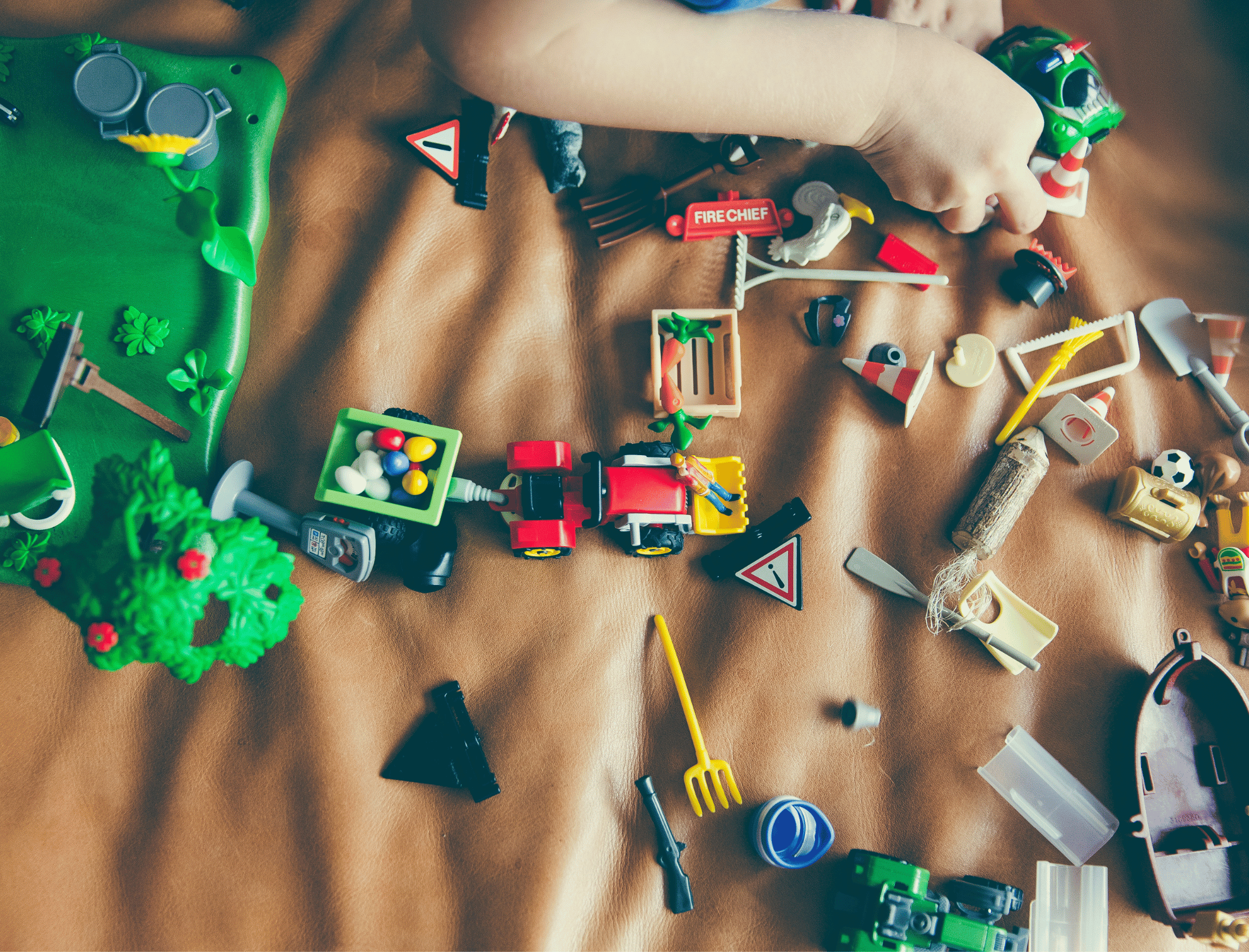A people basket consists of figurines representing different racial, ethnic, gender, and physical abilities. It’s an interactive, fun tool to teach children about self-love, embracing others, identifying unfairness, and acting justly—the four goals of anti-bias education! Here’s how to make a people basket, plus five activities to get started.
How To Make a People Basket
You only need two things to make a people basket:
- Several different figurines of people
- A basket
For the figurines, I recommend purchasing these multicultural figurines and these disabled figurines. For the basket, I recommend using any basket, bin, tray, or bag you have around the house (or splurging on this basket from a company with great values). Once you have these items, simply put the figurines in the basket—voila! You have a people basket.
As you engage with the following people-basket activities, keep in mind the four goals of anti-bias education:
- How do I strengthen a child’s self-love?
- How do I help them strengthen their capacity to embrace people?
- How do I help them to strengthen their capacity to identify unfairness?
- How do I help them to strengthen their ability to act justly?
5 Activities For a People Basket
1. Build Your Family
To teach self-love, have your children use their people basket to construct their family. Ask: Can you show me who’s in our family? And see what they say! Animals are included in the most updated version of the figurines, so they can include their pets and their parents, siblings, extended family, or even the wider community, depending on how they understand and define family.
The people basket in this activity helps children have accurate language and feel comfortable and confident in their family dynamics.
Examples of ways to discuss the figurines during the activity:
- What language(s) does Nana speak?
- Pop Pop doesn’t live in our house, and he’s still in our family
- In our family, we have two moms and you, and that makes our family
2. Compare Other Family Structures
Another activity you can do with the people basket is to have your child create other families. For example, they can construct the family of a book they are reading or a friend’s family. As they build this other family, you can compare and contrast all the differences within different families.
This activity promotes children’s mental flexibility to understand and accept the diversity in families.
3. Have Accurate Language for Differences
In this activity, practice using accurate language with the figurines. Pick up specific figurines and practice. Examples:
- For one of the figurines, you might say “This is a girl,” or “Maybe they are nonbinary,” or “We are not sure what their gender is, and we still treat them with care.”
- You can also practice pronouns. Practice using the universal “they/them” with the figurines, or you can discuss that one of the figurines is trans.
- You can practice using language like “mature,” “older,” and “younger,” to represent age.
4. Build Accessibility Into Structures
To help teach children about ableism and how to identify it, use the people figurines to demonstrate how people with different abilities navigate structures.
For example, let’s say you are building a castle with your child. As you are building the structure, use the figurine of a child using a wheelchair to make sure that the new structure is accessible for people who use wheelchairs. This exercise can apply to any imaginary or physical structure you create with your children.
This activity can help children remember to keep accessibility in the forefront of their minds as they use their imaginations and navigate the world around them.
5. Role Play With The Figurines
If an event happens in your child’s life that has a valuable teaching moment in it, the people’s figurines can be used as role play to process the experience. Imagine a scenario where a grandfather tells his grandson, “Don’t get beat by a girl.” Use figurines to demonstrate some advocacy phrases the little boy could have used to respond to the grandfather’s comment.
Back Pocket Phrases For Guided Play
While playing or building with kids, avoid overdirecting the play. Play is natural for children, and playing with your child should be as natural as possible. Additionally, skip phrases like “that’s wrong” or “you’re not doing it right.” These phrases polarize playtime and, consequently, will banish antiracist work. Bring it back to curiosity and have a few statements prepared for what comes up, like:
- What a beautiful question. I don’t know the answer, but I know who to ask
- I haven’t thought about it until now. I’ll research it and get back to you
- I hear/see that you are noticing [insert the comment]. Let’s use [insert phrase] because [insert explanation]
- Try again. This person uses they/them pronouns
- Tell me more
Room for Improvement
These figurines include people representing different racial identities, ages, gender identities, and physical abilities. They also include pets! As wonderful as these figurines are, there are a few places where they fall short. The figurines do not include body diversity (so you won’t find any people with a large or fat body) nor nonbinary representation (the figurines all uphold gender stereotypes).
Here’s a tip for addressing this with your children: The third goal of anti-bias education is to identify unfairness, and part of this is identifying who is missing in representation. Ask your child what kinds of people are not represented in the figurines and talk about how this is unjust.
And that’s it, folks! Let me know how your people basket goes. I’m rooting for you!





